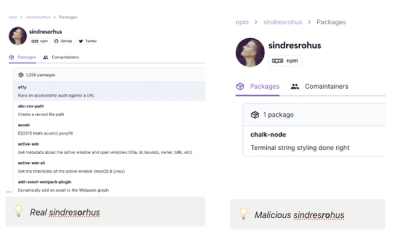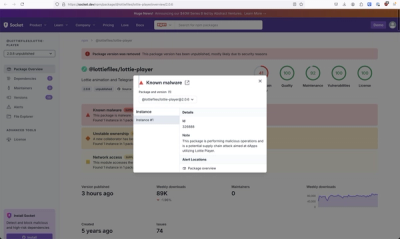Nodemailer
Nodemailer is an easy to use module to send e-mails with Node.JS (using SMTP or sendmail) and it's Unicode friendly - You can use any characters you like ✔
Nodemailer supports
- Unicode to use any characters
- HTML content as well as plain text alternative
- Attachments
- Embedded images in HTML
- SSL/TLS for secure e-mail delivery
- SMTP, sendmail and Amazon SES
Installation
Install through NPM
npm install nodemailer
or download ZIP archive.
The source for Nodemailer is available at GitHub.
Compatibility
Nodemailer is fully compatible with Node.js versions 0.3.x, 0.4.x and 0.5.x on *nix and 0.5.x on Windows
Usage
nodemailer.send_mail(mail_params, callback)
Where
- mail_params defines the e-mail (set its subject, body text, receivers etc.), see E-mail Message Fields for details
- callback is the callback function that will be run after the e-mail is sent or the sending failed
Simple use case to send a HTML e-mail with plaintext alternative
var nodemailer = require('nodemailer');
// one time action to set up SMTP information
nodemailer.SMTP = {
host: 'smtp.example.com'
}
// send an e-mail
nodemailer.send_mail(
// e-mail options
{
sender: 'me@example.com',
to:'you@example.com',
subject:'Hello!',
html: '<p><b>Hi,</b> how are you doing?</p>',
body:'Hi, how are you doing?'
},
// callback function
function(error, success){
console.log('Message ' + success ? 'sent' : 'failed');
}
);
The callback function gets two parameters - error and success. If there's an
error, then sending failed and you should check where's the problem. If there's
no error value but success is not true then the server wasn't able to process
the message correctly. Probably there was timeout while processing the message
etc - in this case you should re-schedule sending this e-mail. If success
is true then the message was sent successfully.
See examples/example_smtp.js for a complete example.
Transfer method setup
Before sending any e-mails you need to set up a transfer method for delivering the messages.
To do this you need to define a properties object for a specific transfer method. Setup only one of these methods since only the first one defined will be used.
SMTP
Use SMTP as the transfer method with the following setup
nodemailer.SMTP = {
host: 'smtp.example.com', // required
port: 25, // optional, defaults to 25 or 465
use_authentication: false, // optional, false by default
user: '', // used only when use_authentication is true
pass: '' // used only when use_authentication is true
}
Amazon SES
Use Amazon SES as the transfer method with the following setup
nodemailer.SES = {
AWSAccessKeyID: 'ACCESSKEY', // required
AWSSecretKey: 'SECRETKEY', // required
ServiceUrl: 'https://email.us-east-1.amazonaws.com', // optional
}
sendmail
Use sendmail as the transfer method with the following setup
nodemailer.sendmail = true;
or
nodemailer.sendmail = '/path/to/sendmail';
Aditional setup
SSL Support with SMTP (port 465)
If you want to use SSL (not TLS/STARTTLS, just SSL), you need to set the ssl parameter to true.
nodemailer.SMTP = {
host: 'smtp.gmail.com',
port: 465,
ssl: true,
use_authentication: true,
user: 'my.username@gmail.com',
pass: 'my.password'
}
TLS Support with SMTP (port 587)
If you want to use TLS/STARTTLS (port 587), leave ssl to false or do not set it, encryption will be started automatically when needed.
nodemailer.SMTP = {
host: 'smtp.gmail.com',
port: 587,
ssl: false,
use_authentication: true,
user: 'my.username@gmail.com',
pass: 'my.password'
}
E-mail Message Fields
The following are the possible fields of an e-mail message:
- sender - The e-mail address of the sender. All e-mail addresses can be plain
sender@server.com or formatted Sender Name <sender@server.com> - to - Comma separated list of recipients e-mail addresses that will appear on the
To: field - cc - Comma separated list of recipients e-mail addresses that will appear on the
Cc: field - bcc - Comma separated list of recipients e-mail addresses that will appear on the
Bcc: field - reply_to - An e-mail address that will appear on the
Reply-To: field - subject - The subject of the e-mail
- body - The plaintext version of the message
- html - The HTML version of the message
- attachments - An array of attachment objects. Attachment object consists of two properties -
filename and contents. Property contents can either be a String or a Buffer (for binary data). filename is the name of the attachment.
There's an optional extra field headers which holds custom header values in the form of {key: value}. These values will not overwrite any existing header but will be appended to the list.
mail_data = {
sender:'me@example.com',
to:'you@example.com',
....
headers: {
'X-My-Custom-Header-Value': 'Visit www.example.com for more info!'
}
}
For debugging set debug to true - then all the data passed between the client and the server will be output to console.
Address Formatting
All the e-mail addresses can be plain e-mail address
username@example.com
or with formatted name (includes unicode support)
'Ноде Майлер' <username@example.com>
To, Cc and Bcc fields accept comma separated list of e-mails. Formatting can be mixed.
username@example.com, 'Ноде Майлер' <username@example.com>, "Name, User" <username@example.com>
Creating HTML messages
Message body in HTML format can be set with the message field html. If property html has contents but plain text alternative body has not (is left to empty), then existing text from the html version is also used in the plaintext version (without the html formatting).
The charset for html is UTF-8.
nodemailer.send_mail({
...
html: '<p>hello world!<br/>хелло ворлд!</p>'
});
Using Attachments
An e-mail message can include one or several attachments. Attachments can be set with the message field attachments which accepts a list of attachment objects.
An attachment object primarly consists of two properties - filename which is the name of the file (not a filepath to an actual file on disk etc.) that will be reported to the receiver as the attachments name; and contents to hold the data in a String or Buffer format.
There's an additional property cid which can be used for embedding images in a HTML message.
Property filename is unicode safe.
var attachment_list = [
{
'filename': 'attachment1.txt',
'contents': 'contents for attachment1.txt'
},
{
'filename': 'аттачмент2.bin',
'contents': new Buffer('binary contents', 'binary');
}
];
nodemailer.send_mail({
...
attachments: attachment_list
});
Using Embedded Images
Attachments can be used as embedded images in the HTML body. To use this feature, you need to set additional property
of the attachment - cid (unique identifier of the file) which is a reference to the attachment file.
The same cid value must be used as the image URL in HTML (using cid: as the URL protocol, see example below).
NB! the cid value should be as unique as possible!
var cid_value = Date.now() + '.image.jpg';
var html = 'Embedded image: <img src="cid:' + cid_value + '" />';
var attachments = [{
filename: 'image.png',
contents: IMAGE_CONTENTS,
cid: cid_value
}];
Issues
Use Nodemailer Issue tracker to report additional shortcomings, bugs, feature requests etc.
Charsets
Currently the only allowed charset is UTF-8. This is probably not going to change.
Slow
SMTP connections are not shared - if you want to send several e-mails to the same domain in a row, then for every mail a new connection is created and closed afterwards. Together with TLS negotiation this can turn out to be pretty slow. Nodemailer is not the best choice for spamming!
Attachments
Do not use large attachments as the attachment contents are read into memory and the final message body is combined into one large string before sending.
Contributors
See Nodemailer/contributors for a live list
License
Nodemailer is licensed under MIT license. Basically you can do whatever you want to with it.



